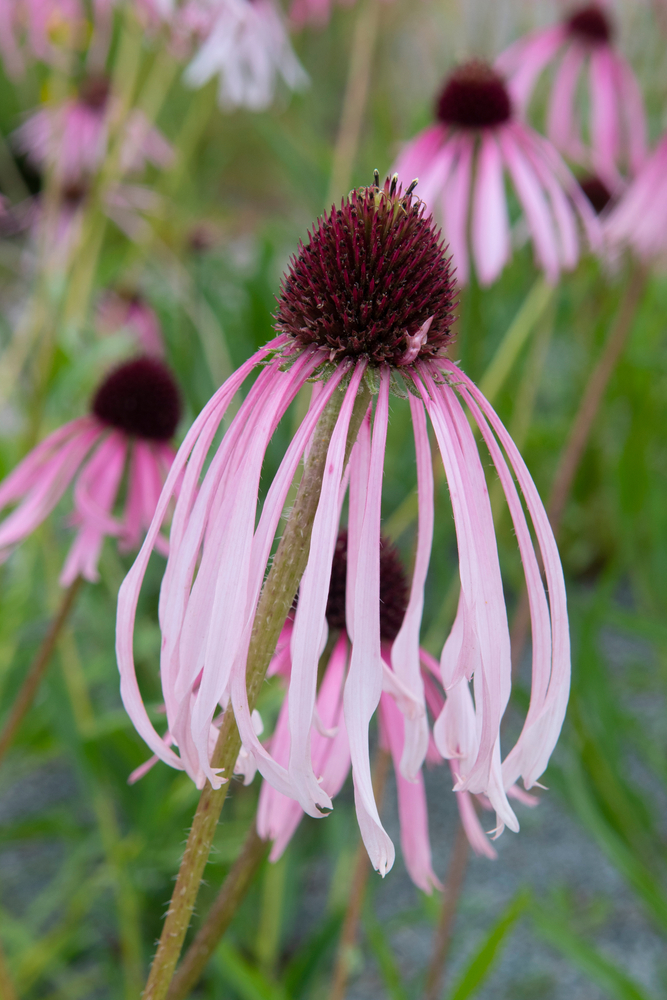Description
Echinacea is a genus of perennial plants native to North America, commonly known as coneflowers. They are popular garden plants due to their attractive daisy-like flowers and long blooming period. Here are some horticultural notes on the genus Echinacea:
Soil: Echinacea plants prefer well-draining soil that is rich in organic matter. They can tolerate a wide range of soil types, but they do not do well in soil that is constantly wet or poorly drained.
Sunlight: Echinacea plants require full sunlight to grow and flower properly. They can tolerate some shade, but they will produce fewer flowers and may become leggy.
Water: Echinacea plants prefer moderate watering, and they can tolerate some drought once established. It is important not to overwater them, as they are susceptible to root rot.
Fertilizer: Echinacea plants do not require a lot of fertilizer, but they can benefit from a light application of balanced fertilizer in the spring.
Pruning: Deadheading spent flowers can help prolong the blooming period of Echinacea plants. It is also a good idea to cut back the foliage in the fall to prevent the plants from becoming too leggy.
Propagation: Echinacea plants can be propagated from seed or by division. It is best to divide the plants every 3-4 years in the spring to maintain their vigor.
Pests and diseases: Echinacea plants are generally resistant to pests and diseases, but they can be susceptible to aster yellows disease, which is spread by leafhoppers. It is important to remove and destroy any infected plants to prevent the disease from spreading.
Varieties: There are many different varieties of Echinacea available, including hybrids with different flower colors and shapes. Some popular cultivars include ‘Magnus’, ‘PowWow Wildberry’, and ‘White Swan’.


